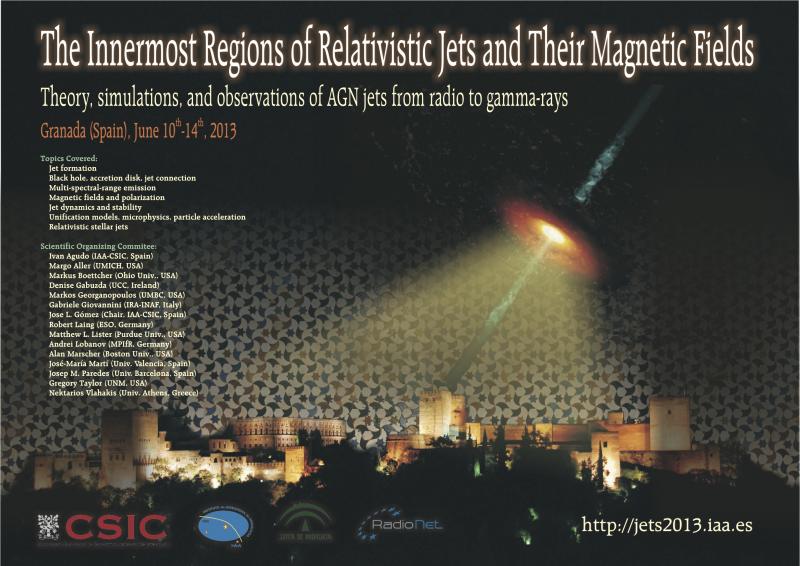The Innermost Regions of Relativistic Jets and Their Magnetic Fields. Granada (Spain). June 10th-14th, 2013.
Meyer, Eileen
Radio-loud AGN unification: Connecting jets and accretion.
While only a fraction of Active Galactic Nuclei are observed to host a powerful relativistic jet, a cohesive picture is emerging that radio-loud AGN may represent an important phase in the evolution of galaxies and the growth of the central super-massive black hole. I will review my own recent observational work in radio-loud AGN unification in the context of understanding how and why jets form and their the connection to different kinds of accretion and growing the black hole, along with a brief discussion of possible connections to recent modeling work in jet formation. Starting from the significant observational advances in our understanding of jetted AGN as a population over the last decade thanks to new, more sensitive instruments such as Fermi and Swift as well as all-sky surveys at all frequencies, I will lay out the case for a dichotomy in the jetted AGN population connected to accretion mode onto the black hole. In recent work, we have identified two sub-populations of radio-loud AGN which appear to be distinguished by jet structure, where low-efficiency accreting systems produce 'weak' jets which decelerate more rapidly than the 'strong' jets of black holes accreting near the Eddington limit. The two classes are comprised of: (1)The weak jet sources, corresponding to the less collimated, edge-darkened FR Is, with a decelerating or spine-sheath jet with velocity gradients, and (2) The strong jet sources, having fast, collimated jets, and typically displaying strong emission lines. The dichotomy in the vp-Lp plane can be understood as a "broken power sequence" in which jets exist on one branch or the other based on the particular accretion mode (Georganopolous 2011).We suggest that the intrinsic kinetic power (as measured by low-frequency, isotropic radio emission), the orientation, and the accretion rate of the SMBH system are the the fundamental axes needed for unification of radio-loud AGN by studying a well-characterized sample of several hundred Fermi-detected jets. Finally, we present very recent findings that the most powerful strong jets produce gamma-rays by external Compton rather than SSC emission, placing the origin of the IC emission in these strong jets at a radius inside the BLR and/or molecular torus (Meyer 2012).




